There are many different types of hair coloring. Whether you normally color your hair or a newcomer to the world of hair coloring, this color guide of our Louisville hair salon offerings is your gateway to unlocking the endless possibilities and creative expressions that come with changing your hair color.
Embarking on a hair color transformation is a significant journey that can have a profound impact on your overall appearance. The right choice of color can not only enhance the aesthetics of your haircut but also subtly alter the contours of your face. At TRIM NuLu, our mission is to streamline and simplify your experience, ensuring that your hair coloring journey is effortless and that the end result perfectly aligns with your envisioned look. Let’s demystify the process, explore the myriad of color choices, and help you make informed decisions that best suit your unique style and preferences.
TRIM NuLu is one of the only Redken Elite salons in Louisville. For hair coloring lines we use Redken Cover Fusion and Redken Shades EQ. For vibrant colors we use Pulp Riot which is owned by L’Oréal, the same parent company of Redken.
Once you’ve found the perfect type of hair coloring for your hair, please book here! If you’d like to come in for a complimentary color consult, please give us a call at 833-874-6444.
What is Demi Permanent Hair Color?
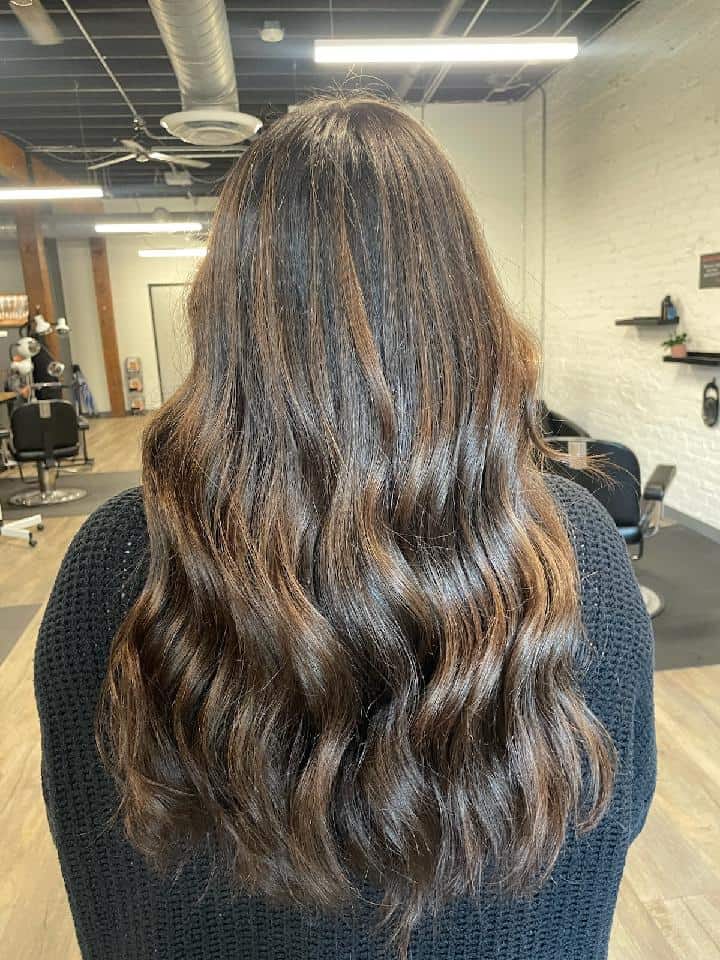
Demi Permanent hair color is a versatile and popular choice for those seeking to enhance their natural hair color, cover grays, or experiment with a subtle change. This type of hair color is often referred to as “demi” for short. Unlike its permanent counterpart, demi-permanent color doesn’t contain ammonia or as high a concentration of developer, making it a gentler option for the hair.
Demi-permanent hair color is a preferred choice for several reasons, primarily due to its versatility and unique benefits. One key advantage is its capability to provide excellent gray coverage while offering a more subtle, natural-looking outcome compared to permanent types of hair coloring. It’s ideal for individuals looking to blend and conceal grays without committing to a dramatic color transformation. Demi-permanent color is also favored for its ability to enhance hair shine and add richness to the existing hair tone. It imparts a lustrous, vibrant finish, which is particularly appealing for those seeking to revitalize their hair’s appearance without undergoing a drastic change.
Benefits and Characteristics of Demi Permanent Hair Color
Demi Permanent hair color offers several benefits, making it a great choice for specific hair color needs:
- Blending and Gray Coverage: One of the primary purposes of demi-permanent color is to blend gray hair. It can effectively camouflage up to 50% of gray strands, making it an excellent option for those who want a more natural, blended look. It’s ideal for individuals who don’t want a fully opaque or drastic change but rather a soft transition.
- Enhanced Shine: Demi-permanent color is renowned for its ability to impart exceptional shine to the hair. It can revitalize dull or lackluster hair, leaving it looking healthier and more vibrant. The result is a glossy, lustrous finish that can boost your overall appearance.
- Darkening Effect: Demi-permanent color is designed to deepen the existing hair color or create a darker shade. It’s an excellent choice if you want to intensify your natural color or add depth to your hair. This makes it a versatile option for both brunettes and those with darker hair.
- Limited Lightening: It’s important to note that demi-permanent color is not formulated to lighten the hair significantly. It doesn’t have the strength to lift your hair’s natural pigment and make it lighter. Instead, its focus is on enriching and refining the existing color.
- Refresh Cycle: To maintain the vibrancy of demi-permanent color, it’s recommended to refresh the application approximately every six weeks. Over time, the color will gradually fade, especially in high-wear areas like the ends and the crown. This scheduled refresh helps keep your hair looking consistently glossy and free from any noticeable grays or fading.
Usage and Versatility:
Demi Permanent types of hair coloring can be used in various ways, depending on your desired outcome. Some common applications include:
- Blending Grays: It’s an excellent choice for those looking to blend away grays subtly. Demi-permanent color provides a more natural transition from gray to the rest of your hair.
- Enhancing Shine: If you’re seeking to enhance the shine of your natural hair color, demi-permanent color can be applied to add a glossy sheen, making your hair look healthier and more radiant.
- Darkening or Deepening: Whether you want to deepen your current shade or add richness to your hair, demi-permanent color can be used to achieve a darker and more vibrant look.
- Glossing: Some individuals opt for demi-permanent color solely for its glossing effect, as it provides an instant boost of shine and vitality to their hair.
In summary, Demi Permanent hair color is a versatile option for those looking to blend grays, enhance shine, and darken their hair without undergoing a drastic transformation. Its gentle formula, limited lightening effect, and recommended refresh cycle every six weeks make it a popular choice among individuals seeking a subtle and polished look.
What Are Permanent Types of Hair Coloring?
Permanent types of hair coloring are a widely-used and comprehensive option for individuals seeking a long-lasting and transformative change to their hair’s color. As the name suggests, this type of hair color provides a permanent change to your hair, and it is well-known for its remarkable ability to cover gray hair effectively.
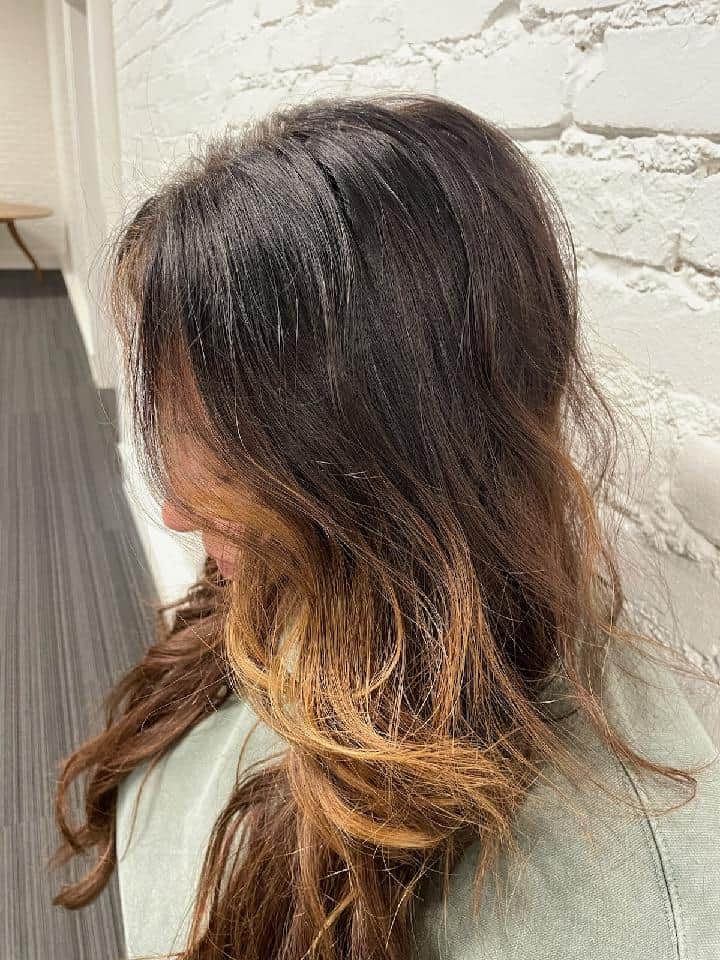
Permanent hair color is a widely-used and comprehensive option for individuals seeking a long-lasting and transformative change to their hair’s color. As the name suggests, this type of hair color provides a permanent change to your hair, and it is well-known for its remarkable ability to cover gray hair effectively.
Permanent hair color is a favored choice for numerous reasons, primarily due to its longevity and versatility. The most prominent advantage is its exceptional gray coverage capability, making it an ideal option for those seeking a comprehensive solution to address graying hair. With the ability to lighten hair by up to four shades, permanent color allows for dramatic transformations and is often chosen by individuals looking to make a significant change in their hair color. Moreover, this type of color is renowned for its enduring nature; it doesn’t wash out gradually like semi-permanent or demi-permanent colors.
Benefits and Characteristics of Permanent Types of Hair Coloring
Here are the primary characteristics and benefits of permanent types of hair coloring:
- Gray Coverage: Permanent hair color is the go-to choice for complete gray coverage. It is formulated to provide an opaque and lasting solution to cover even the most stubborn gray strands. If you’re looking to achieve a solid, uniform color that conceals all grays, this is the ideal option.
- Darkening Hair: In addition to covering grays, permanent color can darken your hair. It is a versatile choice for individuals who want to achieve a deeper and more intense hair color, whether to enhance their natural hue or create a dramatic change.
- Lightening Effect: While permanent color is most commonly used for darkening the hair, it also has the capability to lighten your natural color. It can lift the hair’s natural pigment by up to four shades. This makes it a versatile choice for those who desire a significant change in their hair’s hue.
- Long-Lasting Results: As the name implies, the results of permanent hair color are long-lasting. The color remains intact until your hair starts to grow out. This means that you can enjoy your new hair color for an extended period without the need for frequent reapplication.
- Maintenance Touch-Ups: Despite its lasting power, permanent color does require maintenance touch-ups every 4 to 6 weeks. This is particularly important for individuals who experience visible root growth or who wish to maintain the vibrancy and uniformity of their hair color.
Usage and Versatility:
Permanent hair color is highly versatile and can be used for various purposes:
- Complete Gray Coverage: It is the preferred choice for those who seek complete gray coverage, ensuring that no gray hairs remain visible.
- Darkening or Deepening: Permanent color is ideal for individuals looking to achieve a darker or more intense hair color.
- Significant Lightening: If you desire a noticeable lightening effect on your hair, permanent color can achieve this transformation.
- Consistent, Lasting Color: Permanent color ensures consistent and long-lasting color, providing an enduring solution to your hair color needs.
It’s important to note that, while permanent types of hair coloring offer remarkable staying power and transformative capabilities, they does require maintenance to keep your color looking fresh and uniform. Regular touch-ups every 4 to 6 weeks are recommended to address visible root growth and maintain the vibrancy of your chosen hue.
In summary, Permanent Hair Color is a comprehensive and long-lasting option known for its outstanding gray coverage, darkening capabilities, and potential for significant lightening. It provides consistent, lasting results that endure until your hair begins to grow out, making it a favored choice for individuals seeking a more permanent and transformative change to their hair color.
What is Glossing?
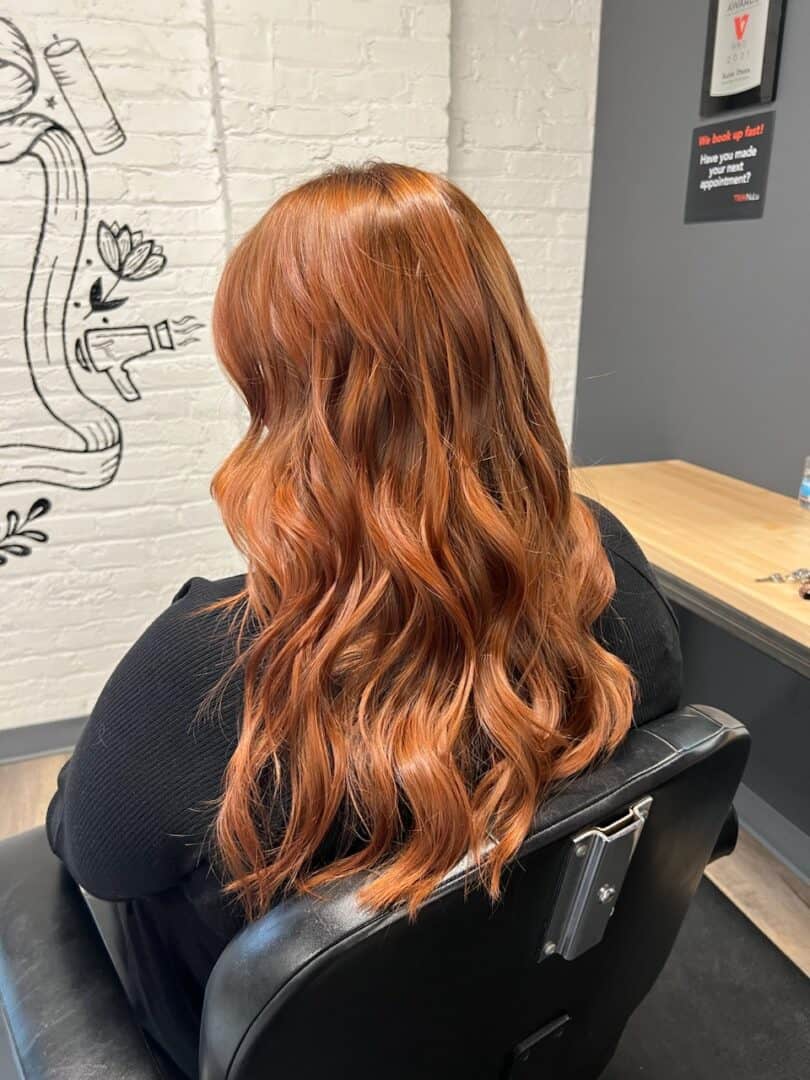
Glossing is a versatile and transformative technique used to enhance the overall appearance and health of the hair. It offers various benefits, from adding a brilliant shine to maintaining or subtly altering the hair’s existing color. This process typically involves applying a specially formulated hair gloss product to achieve the desired results.
The process of glossing typically involves the application of a specially formulated product that contains ingredients to achieve the desired results. This product is meticulously applied to the hair, creating a protective and nourishing layer. In addition to enhancing shine and color, the gloss can also help in minimizing frizz, increasing manageability, and improving the overall texture of the hair.
Benefits and Characteristics Glossing Your Hair
- Enhanced Shine and Cuticle Sealing: One of the primary purposes of glossing is to introduce a high level of shine to the hair. A clear glossing treatment can be used to add lustrous, mirror-like shine to the hair strands. It achieves this by sealing and smoothing the cuticle of the hair. When the cuticle lays flat and is sealed, it reflects light better, resulting in a shiny and radiant appearance. This is particularly advantageous for those with dull or lackluster hair, as it can restore vibrancy and vitality.
- Customizable Tone Enhancement: Glossing is not limited to clear applications; it can also be customized to add a specific tone or tint to the hair. This means that, in addition to shine, glossing can introduce subtle color adjustments. Whether you’re looking to intensify the warmth of your hair color, cool down brassiness, or add depth, glossing can be tailored to enhance the tone of your hair.
- Temporary Effect: Glossing is a non-permanent process. The results typically last for about four weeks, making it a fantastic option for those who want a temporary change in their hair’s appearance. This feature is particularly valuable for individuals who like to experiment with different tones or maintain a consistently radiant look without committing to a more permanent color change.
- Low Maintenance: Glossing is known for its low maintenance. Unlike traditional permanent types of hair color, glossing treatments do not result in obvious root growth or the need for frequent touch-ups. This makes it a practical choice for individuals who prefer a fuss-free and easy-to-maintain hair care routine.
Usage and Versatility:
Glossing can serve various purposes and cater to different preferences:
- Shine Enhancement: A clear glossing treatment is an ideal choice for individuals who want to boost the shine and vitality of their hair without making any noticeable changes to their color.
- Tone Customization: Glossing can be customized with specific tones or tints to enhance the hair’s existing color or make subtle adjustments to the tone. This is particularly beneficial for those looking to refine the warmth, coolness, or depth of their hair color.
- Temporary Adjustments: Since glossing is non-permanent, it’s an excellent option for individuals who want a temporary change in their hair’s appearance. It’s a way to introduce variety and experiment with different looks without making a long-term commitment.
- Low Maintenance Radiance: Glossing is a low-maintenance choice, requiring infrequent touch-ups. This is advantageous for those who prefer a hassle-free hair care routine while still enjoying the benefits of radiant and healthy-looking hair.
In summary, glossing is a versatile and transformative hair treatment that offers a range of benefits, including enhanced shine, cuticle sealing, customizable tone enhancement, temporary effects, and low maintenance. Whether you seek a glossy, radiant finish or subtle tone adjustments, glossing can cater to your specific hair care needs and preferences, providing an easy way to elevate the appearance of your hair.
What Are Highlights?
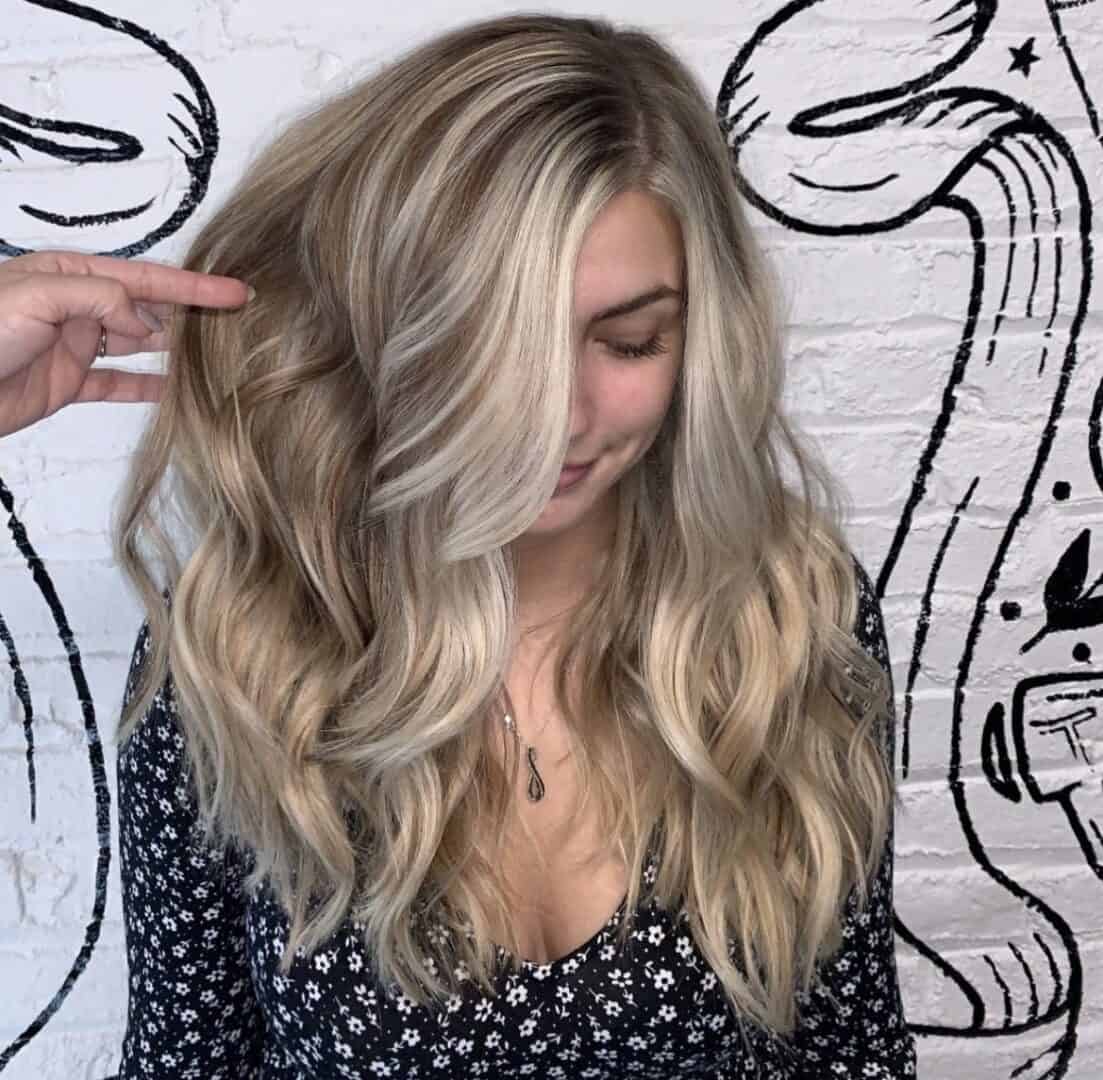
Highlights are a popular hair coloring technique that involves lightening specific sections of the hair. This process typically uses bleach or permanent hair color to create strands that are lighter than the hair’s natural color. Highlights are known for their ability to add dimension, depth, and a sun-kissed effect to the hair, enhancing its overall appearance. At our Louisville salon, highlights are a customer favorite. We perform over 200 of these hair coloring services a month.
The highlights to the left include the addition of a money piece. By enhancing your eyes, cheekbones, and jawline, a money piece can create a more flattering and eye-catching appearance. This accentuation extends to complementing your skin tone, with the money piece’s color selected to enhance your natural features and provide a harmonious balance.
Key Characteristics and Benefits of Highlighting Your Hair
- Lightening Specific Sections: The fundamental idea behind highlights is to selectively lighten portions of the hair rather than applying color uniformly across the entire head. This selective lightening creates contrast and visual interest within the hair.
- Gray Blending: Highlights can provide gray blending by introducing lighter strands that blend in with the rest of the hair. While highlights do not offer full gray coverage like some other coloring techniques, they are an effective way to camouflage and blend grays into the overall look.
- Customization: Highlights can be highly customized to cater to individual preferences. You can choose the level of contrast, the placement of the highlights, and the degree of lightening, allowing for a tailored look that complements your unique style.
- Variable Touch-Up Schedule: The frequency of touch-ups for highlights depends on how much contrast and lightening you opt for. Typically, touch-ups can range from every 6 weeks to 10 weeks, depending on your desired look and the contrast between the highlights and your natural hair color.
Usage and Versatility:
Highlights can serve various purposes and adapt to different style preferences:
- Dimension and Depth: Highlights add depth and dimension to the hair, creating a visually appealing and multi-dimensional effect.
- Natural-Looking Blending: For those with some gray hair, highlights can offer a more natural and blended look, allowing grays to blend into the lighter strands.
- Customization: Highlights are highly customizable, making it possible to create a look that ranges from subtle and sun-kissed to bold and striking.
- Variable Touch-Up Intervals: The touch-up frequency for highlights can be tailored to your specific preferences, allowing you to maintain the desired level of contrast.
In summary, highlights are a versatile hair coloring technique that provides selective lightening to specific sections of the hair, offering dimension, depth, and gray blending. Their customization options make them a popular choice for individuals looking to achieve a wide range of looks, from subtle and natural to bold and dramatic. The touch-up schedule for maintaining highlights can be adjusted to match your preferred level of contrast and lightening, allowing for a personalized and dynamic hair color style.
What Are Lowlights?
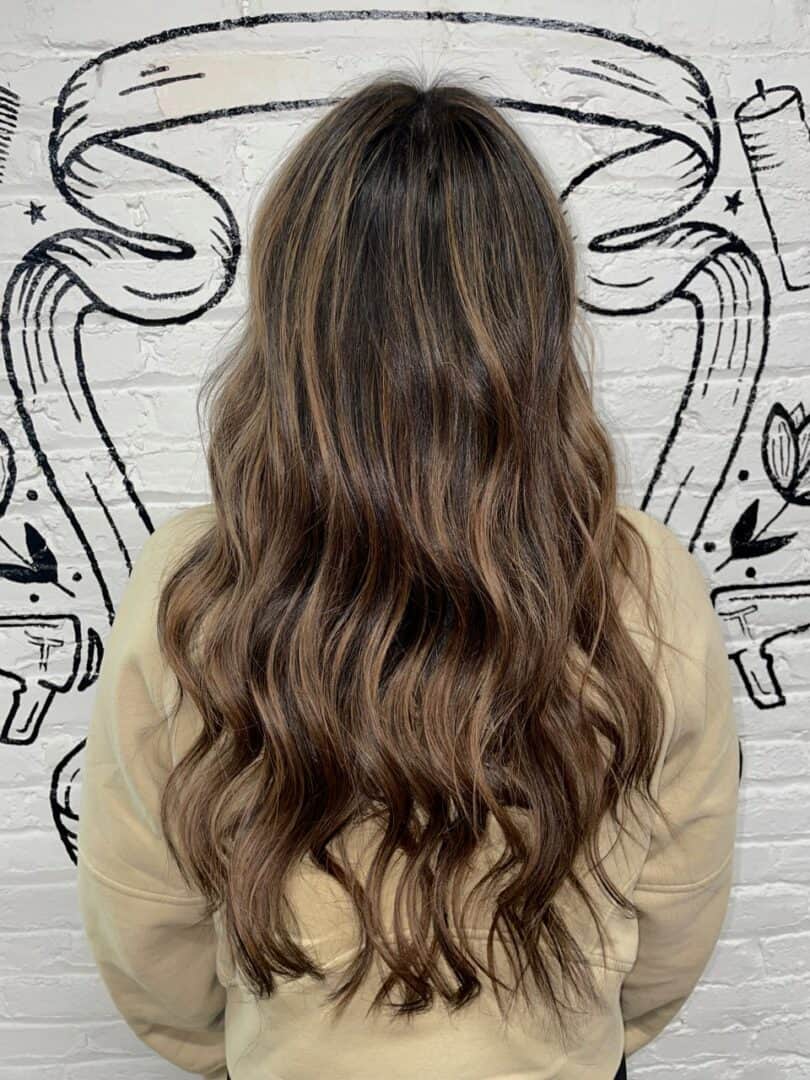
Lowlights are a hair coloring technique that involves darkening specific portions of the hair using either permanent or semi-permanent types of hair color. The goal of lowlights is to introduce darker strands into the hair, creating a contrast with the naturally lighter areas. Lowlights are well-known for their ability to add depth, dimension, and richness to the hair’s overall appearance.
Lowlights are a sought-after hair coloring technique for several compelling reasons. They serve as a strategic contrast to traditional highlights, offering depth and dimension to the hair. Lowlights typically involve darkening certain sections of the hair with semi-permanent or permanent color, creating a multi-dimensional look that adds richness and texture. One of the primary motivations for choosing lowlights is to achieve a more natural and balanced appearance. By introducing darker shades, lowlights mimic the way natural sunlight affects the hair, producing a look that is both authentic and harmonious.
Key Characteristics and Benefits of Lowlights
- Darkening Specific Sections: Lowlights work by selectively applying darker color to specific sections of the hair while leaving other areas lighter. This selective darkening creates contrast and texture within the hair.
- Dimension and Depth: Lowlights contribute to the hair’s overall dimension and depth. The contrast between darker and lighter strands adds visual interest and creates a multi-dimensional effect.
- Customization: Lowlights are highly customizable, allowing for individual preferences. You can choose the degree of darkening, the placement of lowlights, and the contrast between the darker strands and your natural hair color.
- Gray Blending: Lowlights can also be used for gray blending, where the introduction of darker strands helps gray hairs blend more naturally with the rest of the hair.
- Variable Touch-Up Schedule: The frequency of touch-ups for lowlights varies depending on your desired look. Typically, touch-ups may be needed every 8 to 10 weeks, depending on the degree of contrast and the rate of hair growth.
Usage and Versatility:
Lowlights can serve a variety of purposes and adapt to different style preferences:
- Depth and Richness: Lowlights add depth and richness to the hair, making it look fuller and more vibrant.
- Natural-Looking Blending: For individuals with gray hair, lowlights can offer a natural blending effect, making grays less conspicuous.
- Customization: Lowlights are versatile and can be tailored to create looks ranging from subtle and sophisticated to bold and dramatic.
- Variable Touch-Up Intervals: The touch-up frequency for lowlights can be adjusted based on your desired level of contrast and the appearance you wish to maintain.
In summary, lowlights are a flexible and creative hair coloring technique that involves selectively darkening specific sections of the hair. They add dimension, depth, and a natural-looking contrast, making them an appealing choice for those who want to enrich their hair’s appearance. The customizable nature of lowlights allows for a wide range of looks, from subtle and understated to bold and striking. The touch-up schedule for maintaining lowlights can be adapted to your specific preferences, making it possible to keep the desired level of contrast and depth in your hair.
What is Balayage?
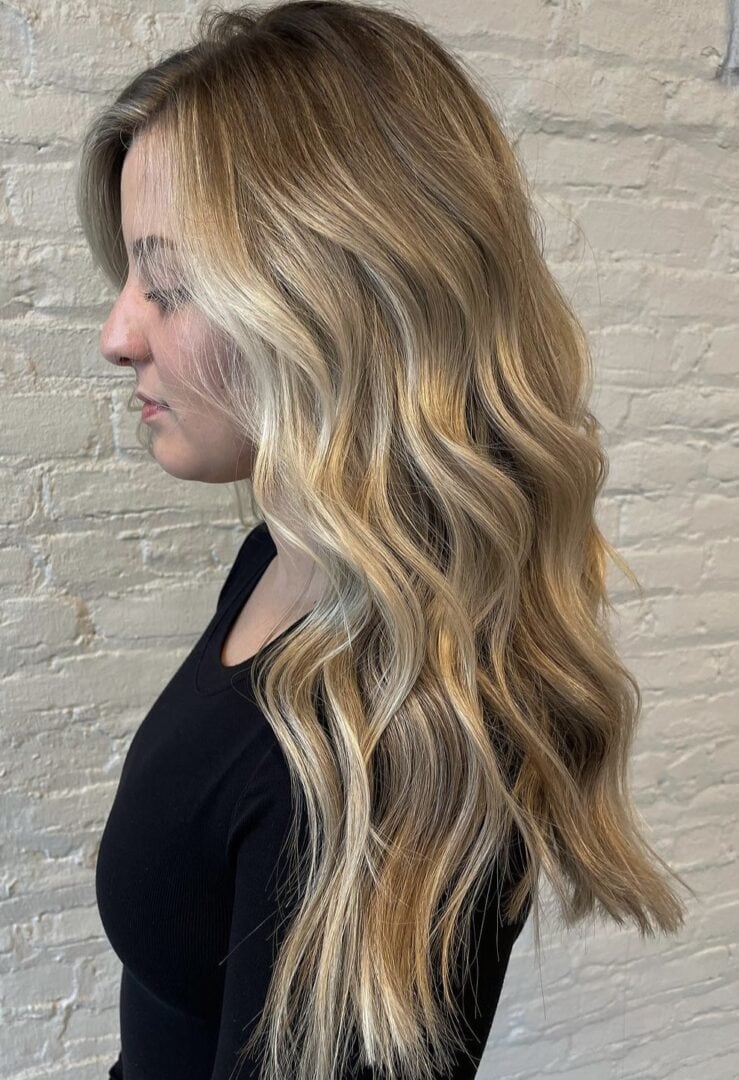
Balayage is a popular and artistic hair highlighting technique that originated in France. It involves freehand sweeping and painting highlights onto the hair to create a natural, sun-kissed effect. Balayage is renowned for its ability to achieve a seamless and blended transition between darker roots and lighter ends, resulting in an ombre or sombre look.
A balayage can be paired with a money piece, as seen to the left. The primary purpose of a money piece is to accentuate and frame the face. By adding a strategically placed section of lighter hair around the face, it draws attention to the facial features, including the eyes, cheekbones, and jawline. This framing effect can enhance the overall appearance and bring out the best in your facial structure.
Key Characteristics and Benefits of Balayage
- Freehand Technique: Balayage is a freehand technique, meaning that the hairstylist doesn’t use foils or traditional highlighting methods. Instead, they apply highlights by hand, painting and sweeping bleach or lightener onto the hair. This technique allows for a more artistic and customized approach.
- Natural-Looking Ombre/Sombre Effect: Balayage is often used to create ombre (a distinct transition from dark to light) or sombre (a more subtle, blended transition) effects. The highlights are strategically painted at varying lengths from the root to mimic the way the sun naturally lightens the hair. The result is a soft, gradual grow-out line, making it one of the most low-maintenance highlighting methods.
- Customization: Balayage is highly customizable, allowing for individual preferences. The hairstylist can adjust the placement of the highlights, the degree of lightening, and the contrast between the lightened strands and the natural hair color.
- Natural-Looking and Low Maintenance: Balayage produces a natural, sun-kissed look that requires minimal maintenance. There are no harsh lines or distinct regrowth, so you don’t need frequent touch-ups. Typically, touch-ups may be required every 8 to 12 weeks, depending on the specific look you desire.
Usage and Versatility:
Balayage serves various purposes and can adapt to different style preferences:
- Sun-Kissed Effect: Balayage mimics the way the sun naturally lightens the hair, resulting in a beautiful, sun-kissed effect that looks effortless and natural.
- Ombre or Sombre Look: Balayage is often used to create either a distinct ombre effect with a clear transition from dark to light or a more subtle sombre effect with a softer and blended transition.
- Customization: The technique is highly customizable, allowing you to achieve the specific degree of lightness, contrast, and placement you desire.
- Low Maintenance and Gradual Grow-Out: Balayage is a low-maintenance choice, and its gradual grow-out makes it an excellent option for individuals who prefer less frequent touch-ups.
In summary, Balayage is a versatile and artistic hair highlighting technique that uses freehand painting and sweeping to create a natural, sun-kissed effect with a seamless transition from dark to light. It’s known for its ability to achieve ombre or sombre looks with a soft, gradual grow-out line, making it a favored choice for those who desire a customized, low-maintenance, and natural-looking hair color style. The touch-up schedule for Balayage can be adjusted to maintain the desired level of contrast and appearance, making it suitable for various style preferences.
What is a Bleach and Tone?
“Bleach and Tone” is a comprehensive hair coloring technique that is primarily used to achieve the lightest possible hair color, typically varying shades of blonde. It involves two main steps: bleaching and toning. The initial step uses bleach to lighten the hair, while the second step, toning, imparts the desired shade and tone to the blonde hair.
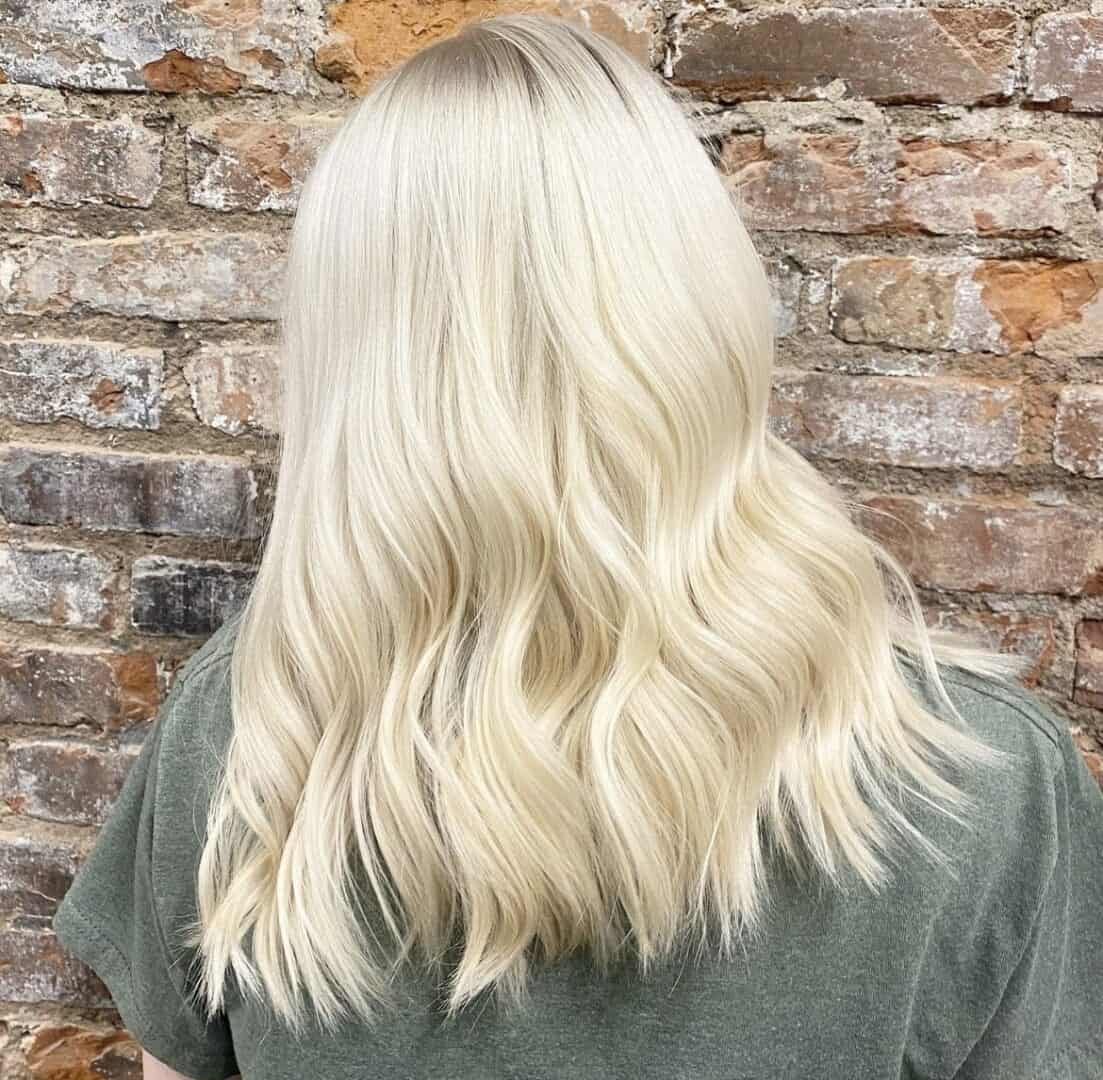
“Bleach and Tone” is a comprehensive hair coloring technique that is primarily used to achieve the lightest possible hair color, typically varying shades of blonde. It involves two main steps: bleaching and toning. The initial step uses bleach to lighten the hair, while the second step, toning, imparts the desired shade and tone to the blonde hair.
Bleaching and toning offer a remarkable level of customization, enabling the creation of vibrant and unique hair colors that capture attention and express individuality. Toning plays a pivotal role in this, as it allows for the fine-tuning of shades, from cool platinum blondes to warm caramel tones, opening doors to a myriad of creative and personalized looks.
Key Characteristics and Benefits of Bleach and Tone
- Lightening with Bleach: Bleach is a powerful product that is applied to the hair to remove its natural pigment. This results in a significant lightening effect, making it one of the most effective methods for achieving a very light or blonde hair color.
- Toning for Desired Shade: After the hair has been lightened with bleach, a permanent hair color is applied to create the desired tone of blonde. Toning helps to neutralize any unwanted undertones or brassiness and provides control over the final shade of blonde.
- Regular Touch-Ups: Maintenance is an essential aspect of bleach and tone. The process typically needs to be touched up every four weeks to address root growth and to ensure the color remains vibrant and consistent.
Usage and Versatility:
- Achieving the Lightest Look: Bleach and tone is chosen when the objective is to achieve the lightest possible hair color, typically in various shades of blonde.
- Customization: Toning allows for a high degree of customization. The hairstylist can adjust the toning shade to achieve warm, cool, or neutral blonde tones based on the client’s preferences.
- Consistency and Vibrancy: Regular touch-ups are essential to maintain the consistency and vibrancy of the blonde color. This ensures that the roots do not show prominent regrowth and the tone remains even.
In summary, “Bleach and Tone” is a comprehensive hair coloring technique used to achieve very light or blonde hair. It involves bleaching to lighten the hair and then toning to create the desired shade of blonde. The regular touch-up schedule, typically every four weeks, is crucial for maintaining the vibrant and consistent appearance of the color. This technique offers a high degree of customization, allowing for a wide range of blonde tones and ensuring the client can achieve their desired look.
What is a Color Touch-Up / Root Touch-Up?
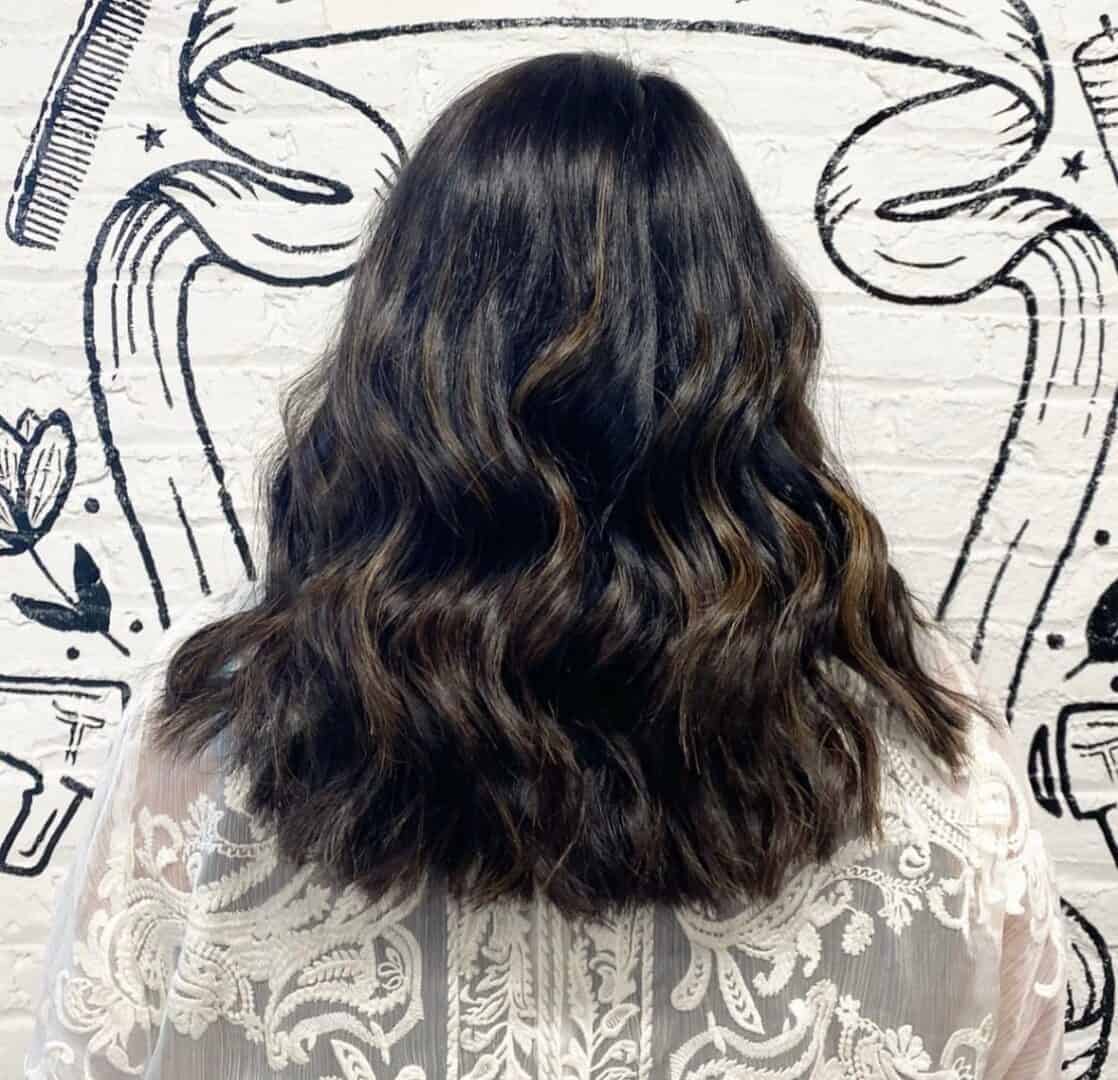
A root touch-up is a hair coloring technique aimed at addressing the visible regrowth of hair, particularly at the roots. This process involves the application of hair color to the newly grown hair at the roots to conceal the natural color and ensure that the previous hair coloring treatment remains consistent and looks fresh.
Conversely, a color touch-up, as seen to the picture on the left, is a broader term encompassing various techniques to refresh and rejuvenate hair color. It goes beyond solely addressing root regrowth and extends to the lengths and ends of the hair. This comprehensive approach is utilized to revitalize the entire hair, ensuring it retains its vibrancy and depth.
Key Characteristics and Benefits of a Color Touch-UP/Root Touch-Up
- Regrowth Concealment: The primary purpose of a root touch-up is to hide and disguise the regrowth of natural hair, which may differ in color from the previously applied hair dye. This is especially common in situations where the initial hair coloring treatment is intended to be a long-term solution.
- Extending the Longevity of Hair Color: Root touch-ups are instrumental in extending the longevity of a hair coloring treatment. By targeting the roots, they prevent the need for a full, all-over hair color application, which can be harsh on the hair and lead to color buildup.
- Maintenance of Consistency: Root touch-ups ensure that the overall appearance of the hair color remains consistent and even. This is vital for maintaining a polished and put-together look, as well as preserving the desired hue and tone.
- Salon or At-Home Application: Root touch-ups offer flexibility in terms of where they can be performed. They can be done professionally at a salon by a hairstylist, or individuals can choose to do them at home using commercially available root touch-up kits.
- Frequency: The frequency of root touch-ups varies from person to person, depending on factors such as the rate of hair growth and the desired look. Some individuals may require touch-ups every few weeks, while others may extend the intervals to several months.
Usage and Versatility:
- Regrowth Management: Root touch-ups are the go-to choice for individuals who want to manage and conceal regrowth while preserving their hair color. They are especially useful for those with graying hair who wish to maintain a consistent appearance.
- Long-Term Color Maintenance: These touch-ups are essential for extending the life of a hair color treatment, as they allow for touch-up precision without reapplying color to the entire head.
- Salon or At-Home Options: Root touch-ups can be accommodated in different settings, allowing for a choice between professional salon services and convenient at-home touch-up kits.
- Frequency Personalization: The frequency of root touch-ups can be personalized to suit individual preferences and hair growth patterns, making them a versatile solution for color maintenance.
In summary, a root touch-up is a hair coloring technique that specifically addresses regrowth at the roots of the hair. It conceals natural hair color, extends the longevity of the initial hair dye treatment, maintains consistency in appearance, and can be performed either at a professional salon or at home. The frequency of touch-ups can be tailored to individual needs, making them an effective solution for regrowth management and long-term hair color maintenance.
What is a Hair Color Correction?
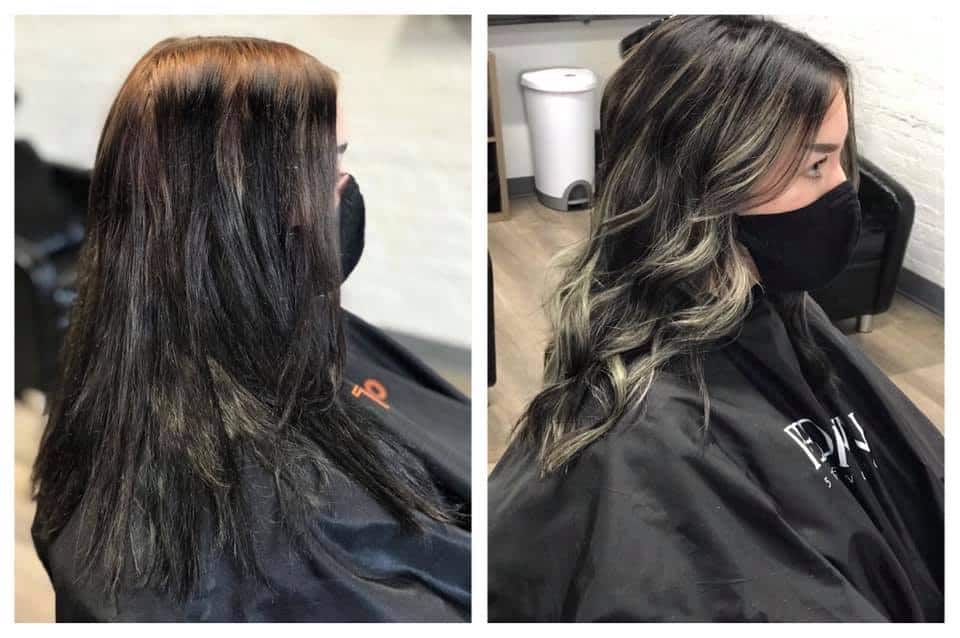
Color corrections, aside from highlights, are what we are known for at TRIM NuLu. Our Louisville salon performs over 50 of these a month and people have come from far away as California to have us correct their hair. Color correction is a multifaceted process that comes into play when the current state of your hair color doesn’t align with your desired look or when a previous hair coloring process has run afoul. One common approach is toning, which is employed to neutralize or eliminate unwanted undertones. For instance, if your blonde hair has taken on a brassy, yellowish hue due to previous coloring, a toner can be applied to counteract these warm tones and bring your hair to a cooler, more natural shade.
In other instances, like in the picture to the left, color correction may necessitate making your hair darker, especially if the current color is too light, has multiple different shades of color, or overly vibrant. This process involves applying a color that is deeper and more subdued to achieve the desired balance or shade. On the flip side, if you’re looking to lighten your hair further to reach a specific color or achieve a particular effect, the color correction can involve lightening techniques, such as bleach or high-lift hair color. These methods are used to strip away some of the existing color and create a blank canvas for the desired hue.
The success of a color correction relies heavily on the expertise of a skilled colorist who can accurately assess your hair’s current state, choose the appropriate method, and carefully apply the necessary products. The goal is to create a harmonious, visually appealing result that aligns with your preferences while maintaining the health and integrity of your hair. Hair color corrections can range from subtle adjustments to more dramatic transformations, and they require meticulous planning, precision, and a keen understanding of the color wheel and the chemistry of hair coloring.

